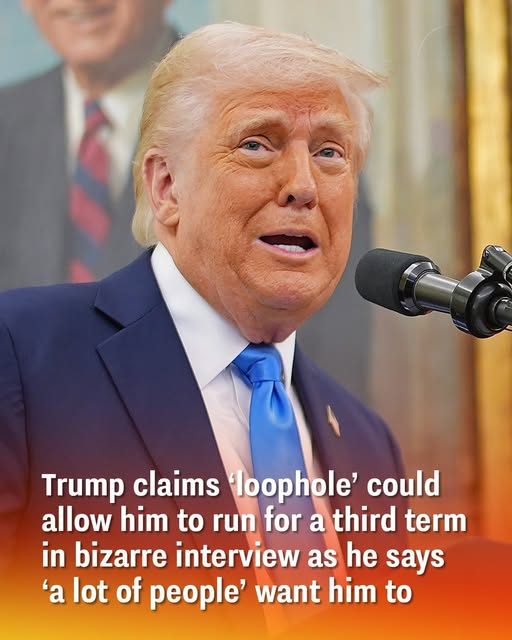Could a U.S. President Ever Serve More Than Two Terms?

For decades, the two-term presidential limit has stood as a cornerstone of American democracy. Established by the 22nd Amendment, it ensures that no leader may serve more than eight years in the White House. Yet, every so often, the question resurfaces: could the rule ever change?
Recently, former President Donald Trump reignited the discussion by suggesting that “loopholes” might exist, sparking debate about the history, legality, and future of presidential term limits. While his remarks attracted attention, they also highlight broader questions about how—and whether—the system could ever be altered.
The Origins of the Two-Term Limit
The U.S. Constitution originally placed no restriction on the number of presidential terms. George Washington, however, set an early precedent by stepping down after two terms in 1797. For more than a century, presidents followed his example.
That changed with Franklin D. Roosevelt, who won four elections between 1932 and 1944, guiding the nation through the Great Depression and World War II. His unprecedented tenure prompted Congress to pass the 22nd Amendment in 1951, making the two-term limit official law.
Trump’s Recent Remarks
In a recent interview, Donald Trump speculated about the idea of serving beyond two terms. While he mentioned scenarios such as amending the Constitution or legislative proposals, legal experts note that such possibilities remain highly unlikely under current law.
The Legal Reality
Several points make a third term nearly impossible:
The 22nd Amendment – It clearly states that no individual may be elected president more than twice.
Amending the Constitution – Any change would require two-thirds approval in Congress and ratification by three-quarters of the states, a nearly insurmountable challenge in today’s political climate.
Succession Loopholes – Proposals suggesting a return to office through vice presidential succession do not hold up legally, as eligibility is clearly defined.
While some members of Congress occasionally introduce bills to extend term limits, such proposals have historically failed to gain traction.
Historical Echoes
Trump is not the first to question the restriction. Ronald Reagan once described the limit as “ridiculous,” Bill Clinton suggested former presidents might return after sitting out a term, and Barack Obama remarked that he believed he could have won again if allowed. Globally, many leaders serve multiple or extended terms, fueling comparisons and debate in the U.S.
Why the Debate Resonates
The discussion continues because it touches on deeper democratic values:
Polarization – Partisan divides intensify reactions to the idea.
Popularity – Leaders with strong followings often inspire loyalty that extends beyond limits.
Checks and Balances – Term limits serve as a safeguard against concentrated power.
Public Reaction
Reactions to Trump’s remarks have been split. Supporters argue that citizens should have the freedom to re-elect a leader they trust, while critics warn that removing limits could weaken democratic safeguards. On social media, the debate ranges from lighthearted commentary to serious constitutional concerns.
Looking Ahead
Despite the renewed discussion, the legal framework remains firm: no president can serve more than two terms under current law. While proposals to amend the 22nd Amendment may surface, experts agree that meaningful change is highly unlikely.
Conclusion
The question of a third presidential term raises enduring debates about leadership, democracy, and the balance of power. While former President Trump’s comments brought the issue back into the spotlight, history and law suggest that the two-term limit is here to stay.